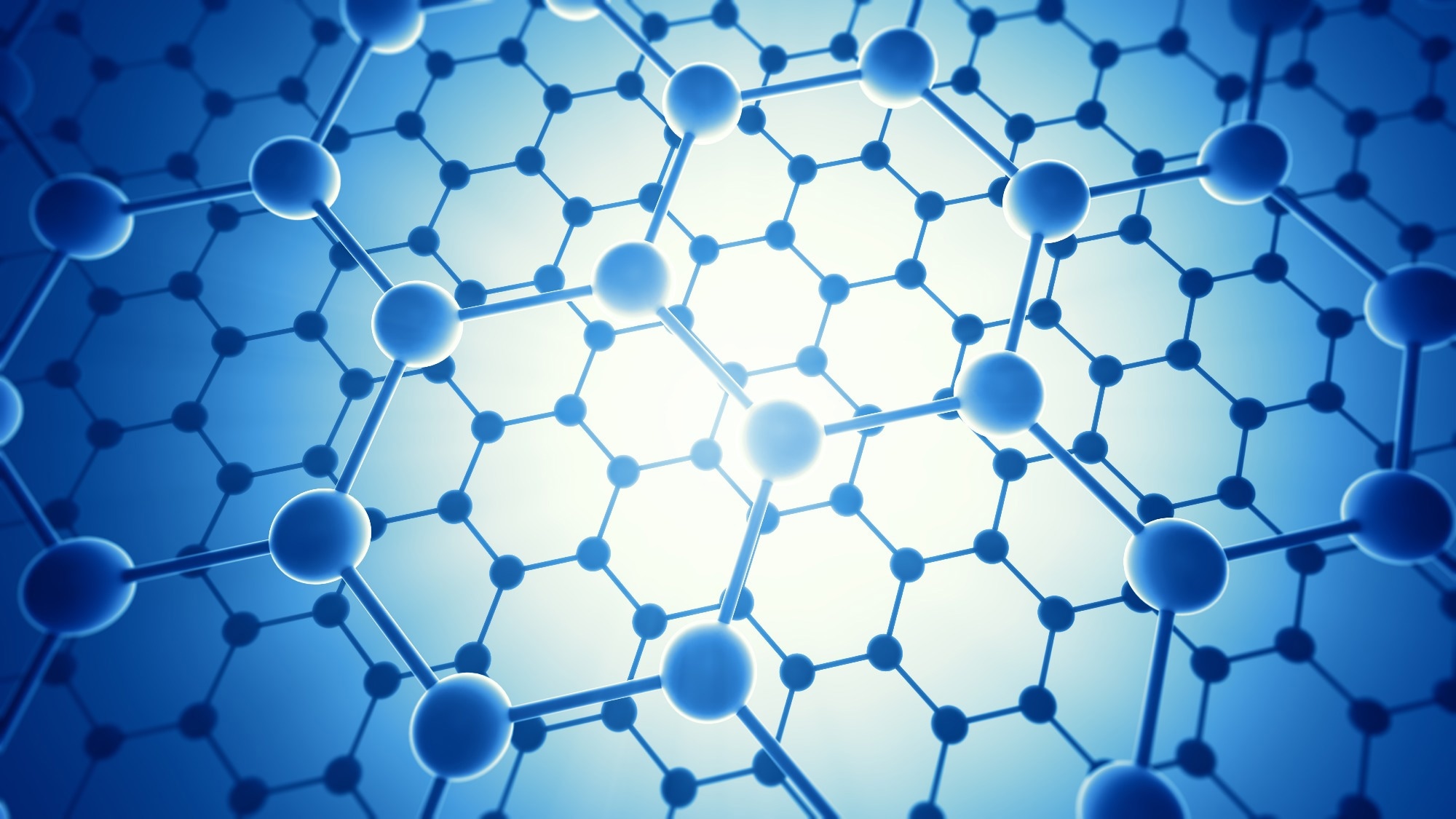A recent article in Nature Communications describes an electrochemical method for producing few-layer halogenated MXenes with preserved surface chemistry.
These MXenes show high electrical conductivity and stability, which supports their use in wear-resistant tribovoltaic nanogenerators. The study also contributes to a better understanding of MXenes’ physical properties and potential applications in electronic and energy devices.
 Image Credit: Mopic/Shutterstock.com
Image Credit: Mopic/Shutterstock.com
Background
MXenes are a family of two-dimensional transition metal carbides and nitrides, first reported in 2011. They are known for combining electrical conductivity with surface reactivity and adjustable surface chemistry. These features make them useful in electronics, energy storage, sensors, and optoelectronics.
Typically, MXenes are synthesized by etching MAX phase precursors using fluoride-containing acids. This results in surface terminations with hydroxyl (-OH), oxygen (-O), and fluorine (-F) groups. While these terminations offer good water dispersibility, they also limit options for surface functionalization.
A key challenge has been finding a scalable, controlled method to produce MXenes with specific terminations, such as halogens (-Cl, -Br), which could improve their performance in certain applications. Many conventional exfoliation approaches either damage the layered structure or alter the surface chemistry.
There is a need for a more efficient and environmentally safe method that can yield few-layer MXene nanosheets with intact and well-defined surface terminations.
The Current Study
The researchers developed a gas-assisted electrochemical exfoliation method to produce halogen-terminated MXenes, including Ti₃C₂Cl₂ and Ti₃C₂Br₂. The process starts with synthesizing MAX phase precursors. These are then electrochemically intercalated with lithium ions using a non-aqueous propylene carbonate (PC) electrolyte. The lithium ions and solvent molecules enter the layers, weakening the bonds between them.
A key feature of the method is the introduction of gaseous propylene molecules during electrochemical exfoliation. These gases interact with the layered structure, helping to further reduce interlayer forces. The process parameters, particularly the applied voltage, are carefully controlled to optimize exfoliation.
The team used several tools to characterize the process and results. In-situ X-ray diffraction (XRD) tracked changes in interlayer spacing. Differential electrochemical mass spectrometry (DEMS) identified gas byproducts. Fourier transform infrared spectroscopy (FT-IR) examined surface groups. These analyses confirmed that the desired halogen terminations were largely preserved.
The resulting MXene dispersions were then tested as lubricants in tribovoltaic nanogenerator devices. Devices were made with MXenes containing either chlorine or bromine terminations, and their performance was evaluated for both electrical output and wear resistance.
Results and Discussion
The exfoliation method successfully produced few-layer Ti₃C₂Cl₂ and Ti₃C₂Br₂ MXene nanosheets with a recovery rate of about 93 %. These results represent an improvement over traditional exfoliation methods. Spectroscopic analysis confirmed that the halogen surface terminations were retained, with limited oxidation or structural defects.
In-situ XRD data showed that gaseous propylene entered the interlayer spaces and disrupted the electrostatic forces between layers. DEMS data supported this by detecting gas byproducts that suggest active gas involvement in exfoliation.
The MXenes maintained their surface chemistry and also showed unique optical behavior, including infrared emissivity across a wide spectrum. This property may be useful in applications such as camouflage or thermal regulation.
In tribovoltaic devices, the halogenated MXenes improved both electrical performance and durability. The dispersions acted as lubricants, enabling smoother contact between device surfaces and reducing wear. This contributed to better stability and extended device lifespan.
Overall, the combination of mechanical durability and controlled surface chemistry suggests these MXenes are viable materials for energy-harvesting and wearable electronics applications.
Download your PDF copy now!
Conclusion
This study introduces a gas-assisted electrochemical exfoliation method for producing few-layer, halogen-terminated MXenes. Using gaseous propylene during exfoliation reduces interlayer bonding without significantly damaging the structure or altering surface chemistry. The resulting MXenes exhibit stable halogen terminations and enhanced functional properties, including infrared emissivity.
When used in tribovoltaic nanogenerators, these MXenes help improve electrical output and mechanical lifespan. The findings indicate potential use in areas such as wearable electronics, energy harvesting, and thermal management systems.
Journal Reference
Fan Q., et al. (2025). Gaseous molecules-mediated electrochemical exfoliation of halogenated MXenes and its boosting in wear-resisting tribovoltaic devices. Nature Communications 16, 5051. DOI: 10.1038/s41467-025-60303-5, https://www.nature.com/articles/s41467-025-60303-5